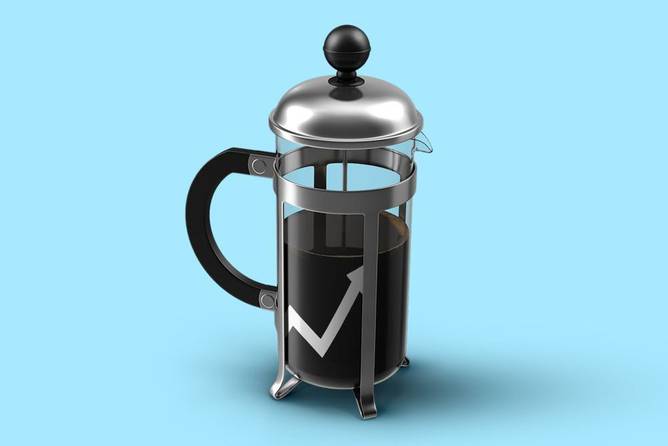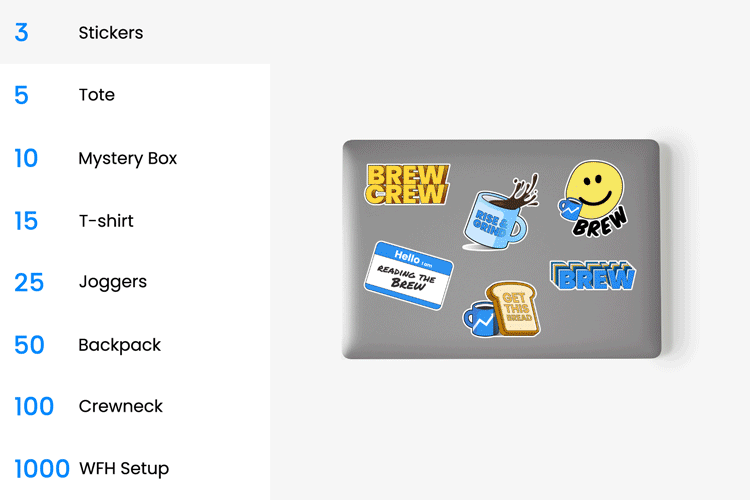It’s Monday. Netflix is planning to open permanent venues for fans of its shows and movies to buy merchandise, eat branded food, and partake in experiences based off of the streamer’s programming, according to Bloomberg. Here’s hoping they name at least one eatery Netflix and Grill.
In today’s edition:
—Katie Hicks, Alyssa Meyers, Jasmine Sheena
|
|
Illustration: Francis Scialabba, Photos: Getty Images
When his leg was amputated last year, Hugh Boyle, who had worked in advertising for more than 30 years at agencies like OgilvyAction and TracyLocke, said the industry’s accessibility issues became clear to him.
Suddenly, things like traveling, meeting clients, and working long hours, which had once been second nature, became obstacles.
Looking back, Boyle told us he had only worked with one person with a disability that he knew of in his career. When he met Bob Wagner, with whom he co-founded creative agency Doable this year, he learned that Wagner had hidden his congenital deafness for decades, out of fear it could hinder his career progression.
“Fast-forward to now, when we’re speaking to a lot of young people with disabilities, what’s really sad is they’re saying the same thing,” he told us.
While agencies in recent years have openly supported causes like racial equality and LGBTQ+ inclusion, people who identify as disabled or neurodivergent told us they’ve historically felt overlooked or left out, despite their creative and economic contributions.
But the tide may be turning: Influencer agency Purple Goat formed in 2020 and Doable opened this summer, both with a mission to improve disability representation in campaigns and within agencies. Employees who identify as neurodivergent or disabled also told us that new roles and more flexibility at larger agencies are boosting inclusivity—but there’s still room for industrywide improvement.
Continue reading here.—KH
|
|
Ready to go from great idea to finished product in record time? Canva makes it easy to design visuals that stand out, zero experience required.
Keep all your content on brand and create your presentation or video with Canva Brand Templates. Upload your brand’s logo, fonts, and colors for a consistent look every time.
Need to get a post up ASAP? Resize a social post yourself in seconds—for any social platform—with Canva Magic Switch. You can even replace your brand’s logo and imagery across multiple designs with just a few clicks.
In case you haven’t noticed, Canva is a serious time-saver. In fact, Forrester Consulting found that businesses using Canva saw a 26% increase in productivity.
Stop waiting for design resources and design it yourself with Canva—the home for every brand.
|
|
Ablokhin/Getty Images
In the words of Avril Lavigne, “Why’d you have to go and make things so complicated?” That’s also apparently what many consumers have to say about X, the social media brand formerly known as Twitter, according to Siegel+Gale’s World’s Simplest Brands survey.
The survey, which is the 10th edition conducted by the Omnicom-owned brand experience firm, asked more than 15,000 consumers across nine countries to rank more than 800 brands based on how simple or complicated they are. X fell 39 spots to the bottom of the US rankings, meaning US consumers see it as more complex than every other brand they were asked about.
That’s bad news for X, according to the report, which says simplicity is “the reason why brands thrive.” And when it comes to simplicity, several grocery stores, fast-food chains, and tech companies ranked highly in the US and around the world.
(Grocery) shop ’til you drop: The simplest brand in the US, according to the survey, is Whole Foods. Trader Joe’s made the domestic list, too, at No. 7. Apart from grocery stores, mail and package delivery services got high marks in terms of simplicity (which may come as a shock to anyone who’s ever tried to track a lost package).
- The USPS ranked No. 2, and UPS No. 4.
- Ride-sharing company Lyft was No. 3 in the US.
The simplest brand in the world is also a grocer. German supermarket chain Lidl “has produced high-quality items, low prices, and simple experiences” for 50 years, according to the report, and is currently focused on integrating “kid-friendly” packaging to encourage young people to eat healthier, all of which contributed to it landing the top spot.
Read more here.—AM
|
|
Screenshot via @publicisgroupe/X
Publicis reported a strong Q3 last week, notching a 5.3% bump in organic revenue.
In its US market, the agency clocked a 3.2% revenue increase, as well as a 10.7% bump in Europe and improving revenues in the Asia Pacific region, which grew 3.8%. The holding company beat analyst expectations of a 3.7% increase in Q3 and upped its organic growth guidance for the year to between 5.5% and 6%. (Last quarter, it had projected 5% YoY growth.)
Publicis attributed its success to new business, varied sources of revenue, and the agency’s own pandemic recovery. It also noted its tech platform Epsilon’s data offering, and its digital consulting and AI arm, Publicis Sapient, did well despite macroeconomic challenges.
“At a moment when the comparable consulting firms experienced project delays, Publicis Sapient nonetheless continued to grow, and Creative confirmed its resilience once again, in spite of industry-wide cuts to classic advertising activities,” Arthur Sadoun, Publicis Groupe chairman and CEO, said in a press release.
The holding company said its immediate priorities include “bringing our teams back together in person” and continuing to build out AI capabilities. The agency confirmed to Ad Age that employees will be required to return to the office for at least three days a week starting in January.
On the AI front, Publicis has been making strides. This summer, the agency acquired Corra, an e-commerce platform, to strengthen Publicis Sapient. Earlier this year, Publicis fully acquired Publicis Sapient AI Labs from consulting groups that helped form the group in 2020. According to Adweek, Publicis said its AI services have helped it win “major business deals.” Publicis’s Profitero division also debuted its own AI-powered commerce analytics software, called Ask Profitero, this summer.
Other marketing highlights for the holding company this quarter: It hired Julia Neumann to helm its creative collective, Le Truc, in September, and Publicis Group Romania opened a PR and communications agency called Publicis Relations in August.—JS
|
|
TOGETHER WITH MARKETING ARCHITECTS
|
|
Lost in the stream? Between high CPMs and a lack of standardized measurement practices, driving ROI through CTV is tough stuff. Annika Streaming from Marketing Architects can help. The first opportunistic rate marketplace in streaming, Annika Streaming cuts out middlemen, unnecessary fees, and waste for lower rates and higher ROI. Get streamin’.
|
|
Morning Brew
There are a lot of bad marketing tips out there. These aren’t those.
Thread up: All you need to know about using Threads to boost marketing.
One, two, three, check: This all-in-one checklist for managing a brand’s social media presence has daily, weekly, monthly, and quarterly task ideas.
Get ready with me: How Ulta Beauty is using AI to doll up its customers.
|
|
Morning Brew
Millennials and older Gen Zers recall Abercrombie & Fitch’s 2000s vibe: loud music, dim lights, and cologne potent enough to make your mom wait outside.
Now relevant once again, learn about the key to the iconic brand’s massive rebranding effort: TikTok.
Find out more here.
|
|
Francis Scialabba
Executive moves across the industry.
-
Laura Santella-Saccone, formerly a marketer at Gerber, is MetroPlusHealth’s new chief marketing and brand officer.
-
Najoh Tita-Reid, a Logitech alum, was named chief brand and experience officer of Mars Petcare.
-
Kim Miller, formerly of Rakuten, is now the chief marketing and analytics officer at Saks Off 5th.
|
|
ADVERTISE
//
CAREERS
//
SHOP
//
FAQ
Update your email preferences or unsubscribe
here.
View our privacy policy
here.
Copyright ©
2023
Morning Brew. All rights reserved.
22 W 19th St, 4th Floor, New York, NY 10011
|
|










